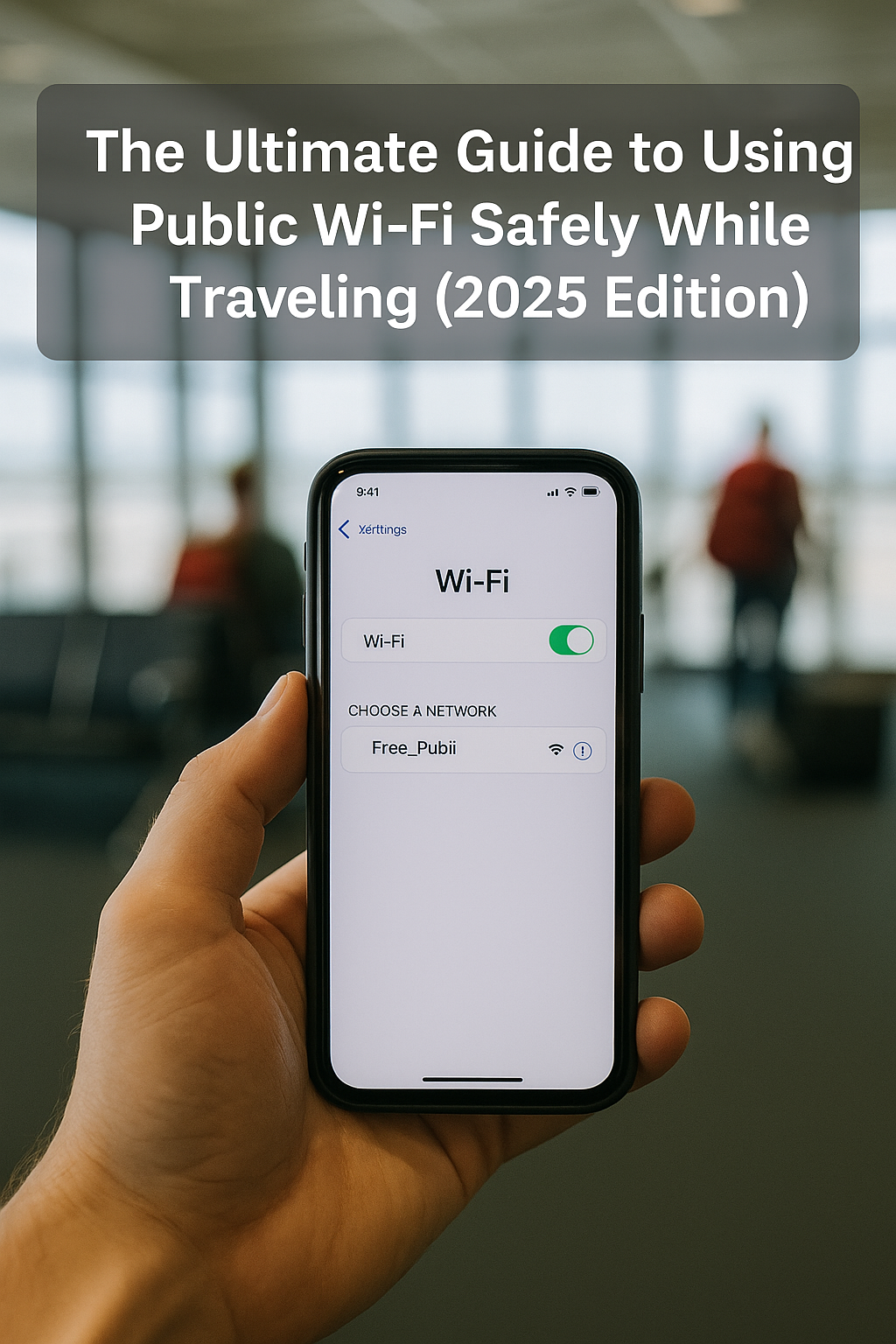Introduction:
Public Wi-Fi is a blessing and a curse.
Whether you’re waiting in an airport lounge, checking in at a hotel, or sipping coffee at a local café, free internet is always a temptation. But in 2025, cyber threats are more advanced than ever — and travelers are prime targets.
From data theft to man-in-the-middle attacks, unsecured public networks are risk zones.
This guide gives you clear, updated, and practical strategies to use public Wi-Fi while traveling — without compromising your personal data or digital identity.
1. Understand the Risks of Public Wi-Fi
Before connecting, it’s essential to know what you’re dealing with.
Common Threats in 2025:
- Evil Twin Networks: Fake hotspots imitating real ones
- Man-in-the-Middle (MITM) Attacks: Hackers intercepting your data
- Packet Sniffing: Monitoring unencrypted traffic
- Session Hijacking: Stealing your login credentials
- Malware Injection: Drive-by attacks from compromised networks
2. Never Use Public Wi-Fi Without a VPN
A VPN (Virtual Private Network) encrypts your internet connection, hiding your data from hackers and third parties.
Best VPNs for Travelers (2025):
- ExpressVPN – Fast, reliable, with global servers
- ProtonVPN – Strong privacy policies and free tier
- Surfshark – Affordable, unlimited devices
- NordVPN – Extra security tools (Threat Protection, Meshnet)
Tip: Set your VPN to launch automatically when you connect to a new network.
3. Always Verify the Network Name
Ask staff to confirm the exact name of the Wi-Fi network before you connect.
Scammers often set up lookalike names like “FreeAirportWiFi” instead of the official “Airport_WiFi_Secure”.
4. Turn Off Auto-Connect
Your device may automatically join known open networks — even malicious ones with the same name.
To disable this:
- On iOS/Android: Go to Wi-Fi settings > Disable “Auto-Join”
- On Windows/macOS: Forget networks or disable automatic reconnection
5. Use HTTPS-Only Sites
Even without a VPN, always stick to HTTPS-encrypted websites.
Modern browsers show a padlock icon in the address bar.
Browser Add-On:
Install HTTPS Everywhere or enable Secure DNS settings for added protection.
6. Keep Your Device Updated
Hackers often exploit outdated systems.
Make sure your OS, browser, and antivirus software are always current.
Enable:
- Automatic updates
- Security patches
- Real-time threat detection (e.g., Windows Defender, Malwarebytes)
7. Use Two-Factor Authentication (2FA)
Even if someone gets your login credentials, 2FA adds an extra layer of security.
Recommended Tools:
- Google Authenticator
- Authy
- Microsoft Authenticator
- Hardware keys like YubiKey (for ultra-secure access)
8. Don’t Access Sensitive Accounts
Avoid logging into banking sites, work email, or cloud storage when using public Wi-Fi.
Use your mobile data for such tasks, or wait until you’re on a secure network.
9. Use a Personal Hotspot When Possible
Your phone can be your best defense.
Tethering via LTE or 5G is often faster and more secure than public Wi-Fi.
Recommended Setup:
- Enable password protection
- Monitor connected devices
- Set a data limit to avoid overcharges
10. Log Out & Forget the Network After Use
When you’re done:
- Log out of all accounts
- “Forget” the public Wi-Fi network
- Restart your device for a clean session reset
Bonus: Travel Routers with Built-in Security
If you frequently rely on hotel or public Wi-Fi, consider bringing a travel router with firewall and VPN support.
Top Picks (2025):
- GL.iNet Slate AX – Compact router with VPN & DNS protection
- TP-Link AC750 – Budget option with WPA3 encryption
- Netgear Nighthawk M6 – High-end mobile hotspot with robust security
Final Tips:
- Rename your device to something generic (not “John’s iPhone”)
- Use a local SIM with data plan if staying long-term
- Install anti-theft tracking apps in case of device loss
- Avoid clicking pop-ups or “Install Software” prompts on public networks
- Turn off Bluetooth and file-sharing when not needed
Final Thoughts:
Public Wi-Fi is a modern travel essential — but using it without precautions is like leaving your passport on a park bench.
In 2025, digital safety is just as important as physical safety.
By following these simple, smart strategies, you can stay connected and protected wherever you roam.
Be wireless. Be fearless — but never careless.
